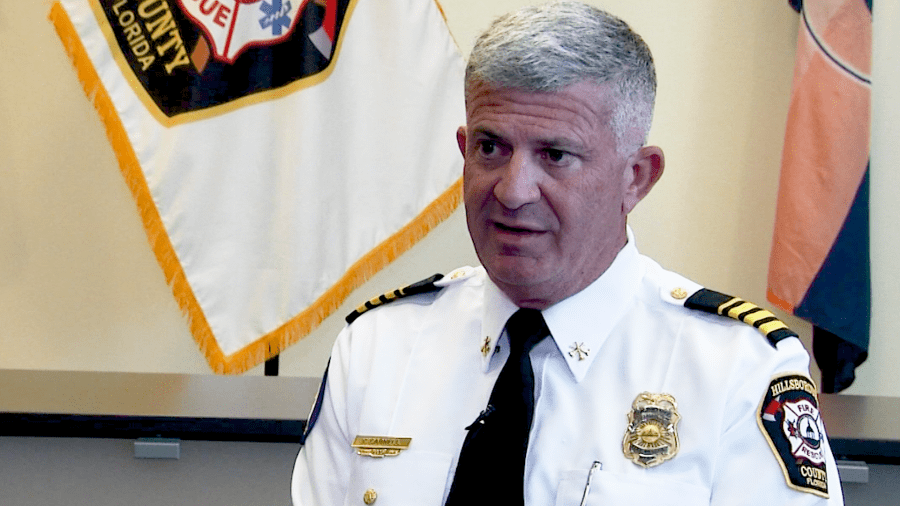TAMPA, Fla. (WFLA) — A nearly two-year investigation that wrapped up recently revealed dozens of vials of narcotics that were tampered with were found on several Hillsborough County Fire Rescue (HCFR) department vehicles.
The initial discovery of the problem in July 2021 prompted the resignation of paramedic Michael Reyer.
In August, the Hillsborough County State’s Attorney decided against charging Reyer, citing insufficient evidence connecting him to the crime. Reyer has not responded to several requests for comment.
8 On Your Side obtained more than 400 pages of documents through a records request that was approved after the Hillsborough County Sheriff’s Office completed its investigation.
According to the documents, investigators discovered “punctured safety caps” and “slightly uneven levels of the liquid” in 81 vials, indicating drugs were removed and replaced with a solution to hide the crime.
Tests of several of the fentanyl and ketamine vials showed they contained diluted versions of the pain killers.
Various quantities of the compromised vials were found on nine engines and six rescues, the documents stated.

HCFR Rescue Division Chief Todd Carnell said the discovery of the vials with pinholes in their lids prompted the department to make improvements to how its drug supply is secured and monitored.
“I know since I’ve been employed with Hillsborough County, nothing on this scale has happened,” Carnell said. “The citizens of Hillsborough County, the visitors, trust us with their lives. The changes were vital.”
There is no evidence right now that any patients received diluted painkillers in the months and years before the issue surfaced, according to Carnell.
“Our hopes are that nobody had an adulterated drug administered to them,” Carnell said. “It makes us all worry that something could’ve happened before but wasn’t caught.”
According to the documents, Reyer was “a person of interest” from the beginning of the probe.
Reyer, a 15-year veteran of the department, was said to have access to the medication and had worked in at least two of the stations where the punctured vials were found.

Investigators also said Reyer told a Battalion Chief “he had a personal drug abuse issue.” Reyer resigned two days after the investigation began.
Carnell credited the department’s medi-vaults with narrowing down who allegedly was involved.
“The new style vault was what allowed us to drill into who we thought it was,” Carnell said. “We knew immediately.”
While some may be frustrated by the lack of charges, Carnell said he understood the reasoning behind the decision that evidence did not explicitly point to a single individual.
“There are too many people [who had access] to say without a doubt that it was one person,” Carnell said. “I understand why it’s very hard without video to say this person did it and we don’t have cameras in the back of the ambulances to make sure patients’ confidentiality is protected.”
Carnell said replacing older metal cabinets that secured drugs with key locks in six back-up units with computerized medi-vaults was one of the improvements made after the compromised drugs were found. Now, all department vehicles that carry drugs are equipped with medi-vaults.
According to Carnell, drug high-tech dispensing machines will also soon to be installed in fire rescue stations, and the department will reduce the number of people who has access to the narcotics.






